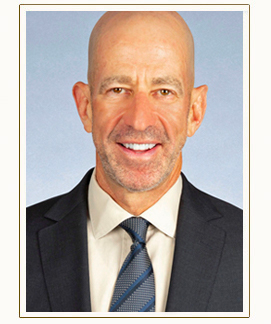Estate planning is a financial process that can protect you and your family, and is a very important component of your overall financial planning. April is National Financial Literacy Month to put your estate planning house in order. If you don’t have an up-to-date estate plan and you happen to get hurt or sick and cannot manage your financial affairs, the courts will have to appoint someone to manage them for you. The person they appoint might not be the one you would want to perform those tasks.
Without an estate plan when you pass away, your affairs will be settled by default through a complex legal system called “probate.” The handling of your financial affairs can turn into a costly and frustrating ordeal for your family and heirs.
The crafting of a good estate plan starts with planning, followed by the proper drafting and signing of appropriate legal documents such as wills, trusts, buy-sell agreements, durable powers of attorney for asset management, and an advanced health-care directive or health-care power of attorney. Having these documents in place saves you and your family a lot of money and time at a very difficult and emotional time.
Your estate planning should also address the coordination of the way you hold title to your various assets, your beneficiary selections, and the possible transfer of certain assets while you are alive.
Regardless of the extent of your net worth, estate planning is important for everyone. Complex strategies may be used by wealthy people to reduce death taxes and costs. Others may only require a simple will and/or trust to pass on property to their heirs and provide for minor children.
Even if a simple will is all you require, an estate plan is an essential part of your financial planning. Everybody will need it someday. The time to address or update your estate plan is now.
CHECKLIST — SIX STEPS TOWARD SUCCESSFUL ESTATE PLANNING
1. DEFINE YOUR GOALS: What do you want to happen to your assets in the event of your death or disability? If your beneficiaries predecease you, who are your alternate selections? How will your assets be distributed, and when will these distributions take place?
Decisions on distribution of your estate assets should take into account the size of the estate, the ages and abilities of your children, and your personal desires. For example, a distribution to children over time might consist of 10 percent of the estate at age 18, 25 percent at age 21, 50 percent at age 24 or upon completion of college, and the balance at age 30.
Choose your appointees for important roles: Who will be your executor and, if applicable, trustee and/or guardians? It is advisable to list at least a first and second alternate for each appointment in case your first choice is unwilling or unable to serve.
If you have children who are minors, the appointment of a guardian is probably the most important decision you’ll make. With the court’s approval, this person, or persons, will raise your children. Consider appointing a family member and spouse, or another close couple who’ll care for your children the way you would want.
You may want to consider listing multiple executors, trustees and guardians to serve together in handling the details of your estate. This can provide a check-and-balance system for the appointees and help them avoid oversights or misappropriations. Consider appointing family members, friends, professionals, advisers and/or trust companies for this position.
There is some risk here: If these people disagree and have problems, they can each be represented in court by counsel paid for by your estate, so be very careful in making your selections.
Living trusts have become popular because less administration is required in comparison with a will. Be aware that having a living trust does not eliminate the need for a will and administration at either the first or second spouse’s death.
To get the benefits of the trust, certain details must be attended to, and this is the job of your appointees. For example, leaving a trust for the surviving spouse requires that the trust be funded properly and in a timely manner at the first death, or major tax benefits can be lost.
Is estate privacy an issue for you? Do you want your estate to be public record upon your death? Do you have any special gifts you want made to charity? Do you want an elderly parent or friend to be financially cared for? All of these circumstances should be noted in your plan.
2. GATHER & ORGANIZE YOUR DATA: There are three basic tasks to be accomplished:
- Review and update your financial position.
- Review how you hold title to your assets. Is it consistent with your estate plan?
- Review your beneficiary selections. Are they aligned with your estate plans?
Did you know that how you hold title to assets has a higher legal priority than your will? For example, if you and your best friend held title to an investment club account as joint tenants and you died, the property would revert to your friend even though you had willed your interest to your spouse.
3. ANALYZE YOUR SITUATION: Start by determining your current net worth, assuming your death occurred today. This can be done by totaling your current assets and liabilities, and adding the value of any life insurance.
Try sketching a picture or flow chart of your existing estate plan. Review your appointees:
- Guardian of the Person/of the Property
- Power of Attorney – Property Management
- Advanced Health-Care Directive or Health-Care Power of Attorney
Check with your financial advisors for updated information.
4. DEVELOP YOUR STRATEGIES: With the assistance of your estate planning advisor(s), identify the legal documents that need drafting or make any necessary adjustments to existing documents. Determine any other actions that must be taken for your wishes to be carried out.
5. IMPLEMENT YOUR PLAN: Do what needs to be done — i.e., create new wills, trusts and powers of attorney, adjust title to your properties, change alternate beneficiaries of retirement plans and life insurance policies to trusts.
6. TRACK & MONITOR YOUR PROGRESS: Check your estate plan annually or any time there are changes in your family situation or net worth. Use your financial planning calendar to schedule your next review.
These materials are provided as a public service by The NAEPC Education Foundation for “free-use” on websites, newspapers, newsletters, magazines, and other media broadcasts during the months of April and October as it relates to National Financial Literacy Month and National Estate Planning Awareness Week. For additional information or materials contact us at The NAEPC Education Foundation.
To assist with your estate planning, visit our website at www.elderlawnewyork.com.
 Caring for a loved one is a labor of love, very often with an emphasis on the work. Caregivers bear an incredible weight in making sure that their loved one is getting what they need while their own life is put on hold. Burnout is common.
Caring for a loved one is a labor of love, very often with an emphasis on the work. Caregivers bear an incredible weight in making sure that their loved one is getting what they need while their own life is put on hold. Burnout is common. 




 If current weather trends continue, 2018 will be the fourth hottest year on record, according to the National Oceanic and Atmospheric Administration.
If current weather trends continue, 2018 will be the fourth hottest year on record, according to the National Oceanic and Atmospheric Administration. The Department of Aging’s
The Department of Aging’s  Today there are new transportation options such as the ride-hailing services Uber and Lyft, which can be faster and less expensive than taxis. These options have been embraced quickly by much of the population, but seniors may be less familiar with them. A smartphone is essential to using the new services, and older individuals may not have smartphones or may not be as comfortable using them. Among Americans over the age of 65, only 42 percent own a smartphone, while 77 percent of the general population owns one. In addition, someone with a physical disability may require a vehicle that can accommodate an assistive device such as a walker or wheelchair, and the new services may not be set up to handle such requests.
Today there are new transportation options such as the ride-hailing services Uber and Lyft, which can be faster and less expensive than taxis. These options have been embraced quickly by much of the population, but seniors may be less familiar with them. A smartphone is essential to using the new services, and older individuals may not have smartphones or may not be as comfortable using them. Among Americans over the age of 65, only 42 percent own a smartphone, while 77 percent of the general population owns one. In addition, someone with a physical disability may require a vehicle that can accommodate an assistive device such as a walker or wheelchair, and the new services may not be set up to handle such requests. Advance directives, such as a Health Care Proxy and Power of Attorney will benefit any adult, as accidents and emergencies cannot be predicted, and do not discriminate by age. By having a Health Care Proxy in place, a person can dictate who will make decisions on their behalf in the event they can no longer make them on their own. In addition, a thoughtfully drafted living will can assist the appointed agent in making the choices that a person would want made, including what kind of end-of-life care they would want to be given or withheld. Another document that becomes tremendously important in the event of incapacity is a durable power of attorney, which allows the appointed agent to manage the principal’s finances.
Advance directives, such as a Health Care Proxy and Power of Attorney will benefit any adult, as accidents and emergencies cannot be predicted, and do not discriminate by age. By having a Health Care Proxy in place, a person can dictate who will make decisions on their behalf in the event they can no longer make them on their own. In addition, a thoughtfully drafted living will can assist the appointed agent in making the choices that a person would want made, including what kind of end-of-life care they would want to be given or withheld. Another document that becomes tremendously important in the event of incapacity is a durable power of attorney, which allows the appointed agent to manage the principal’s finances.